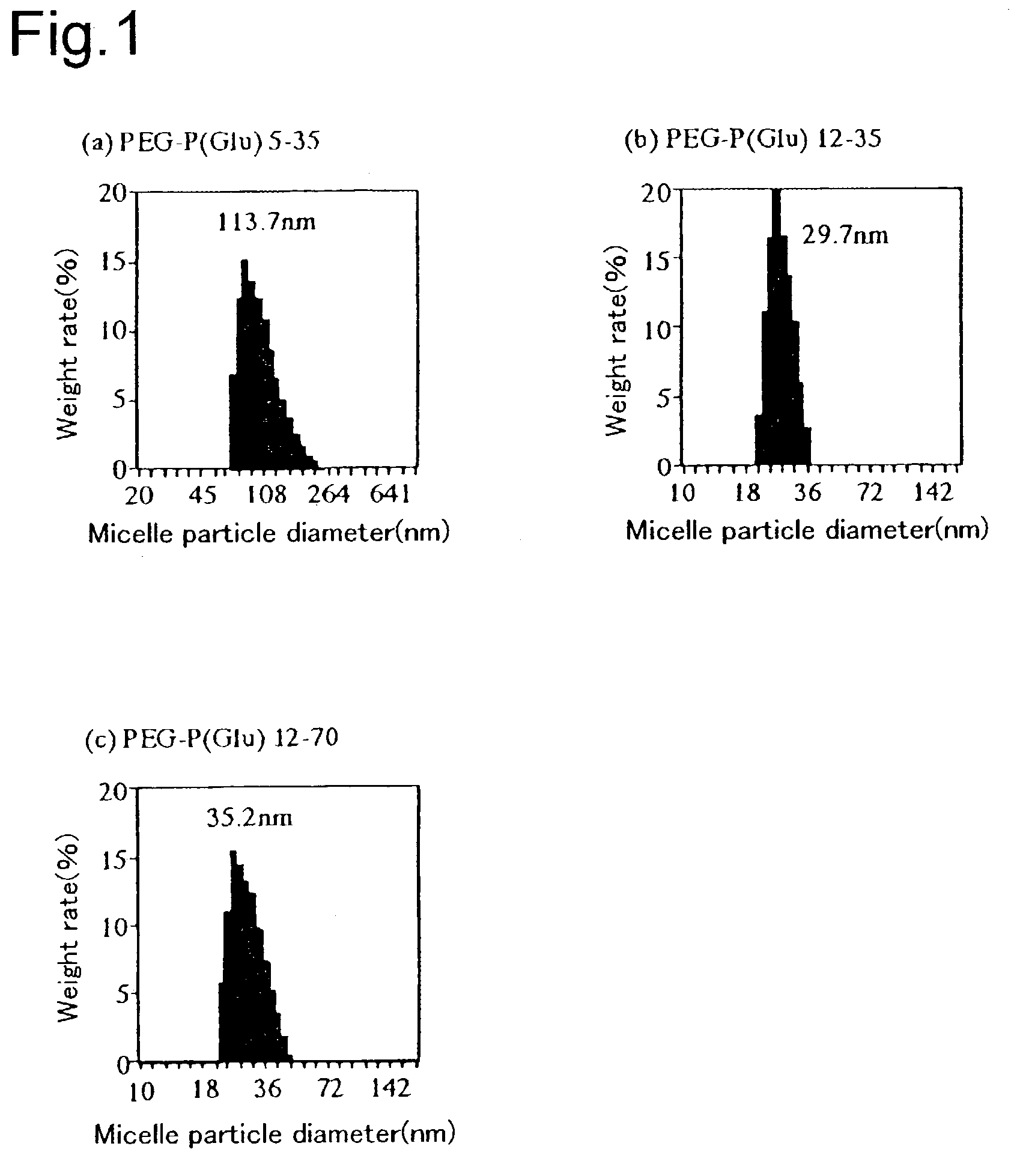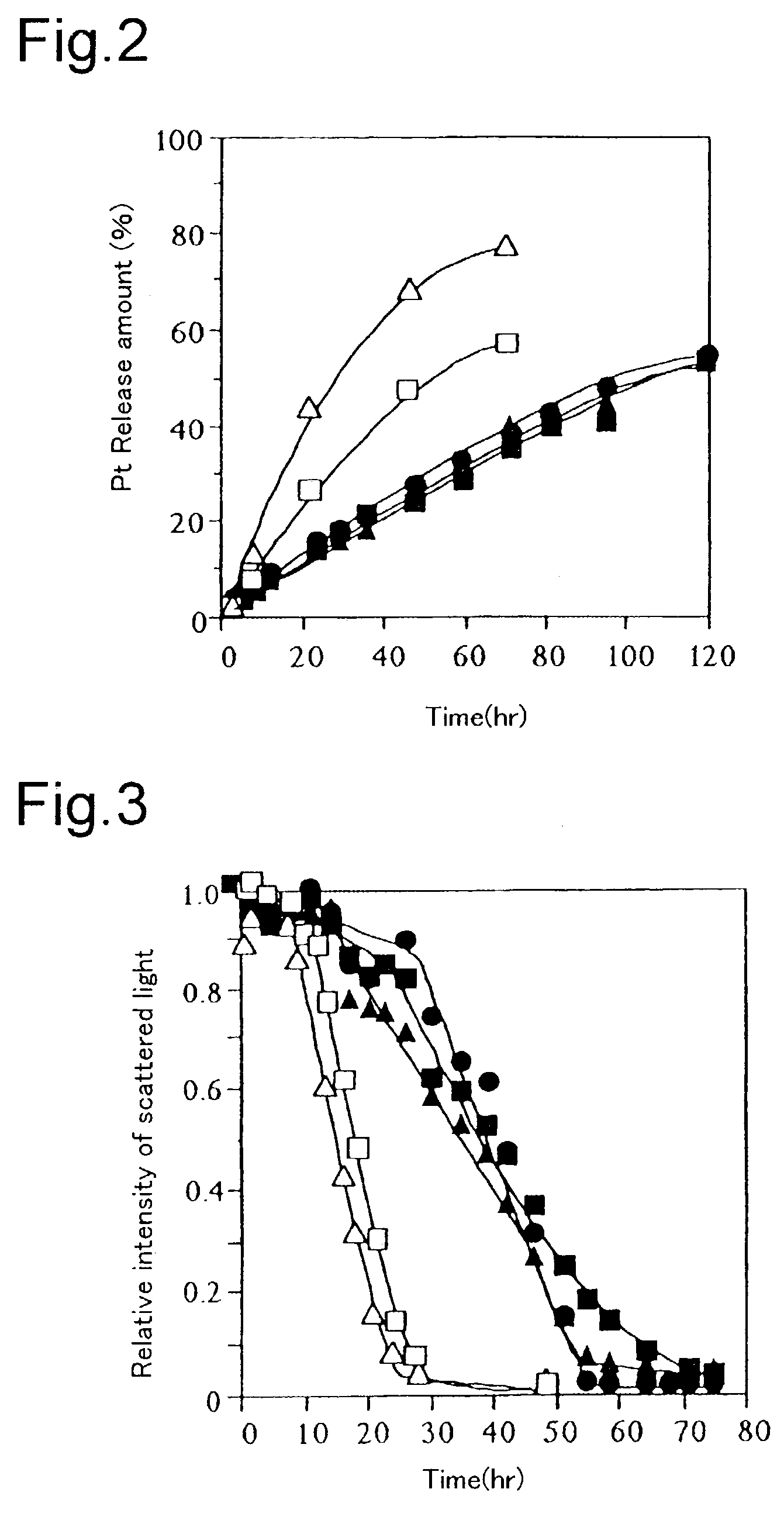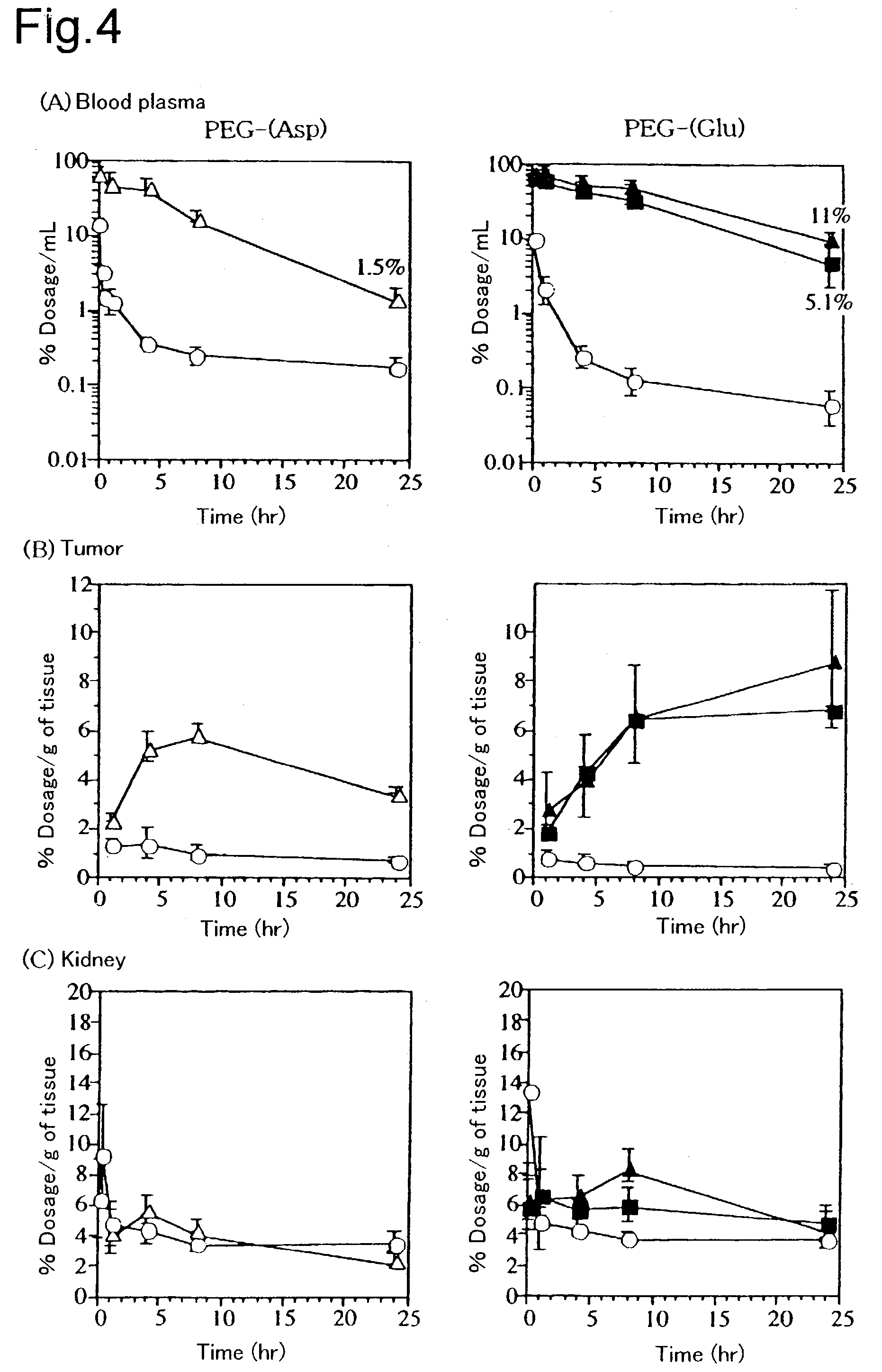Polymeric micelle containing cisplatin enclosed therein and use thereof
a technology of polymer micelles and cisplatin, which is applied in the direction of biocide, drug composition, peptide/protein ingredients, etc., can solve the problems of metal not being released efficiently or at a suitable speed, or not being released from the complex formed
- Summary
- Abstract
- Description
- Claims
- Application Information
AI Technical Summary
Benefits of technology
Problems solved by technology
Method used
Image
Examples
example 1
[0035]In the present example, the production example of the CDDP-encapsulating polymer micelle of PEG-P(Glu) of the present invention shall be shown together with PEG-P(Asp) described in Nishiyama et al. described above. The block copolymer used in the present invention is shown by, for example, the following structural formula:
[0036]
[0037]Cisplatin (CDDP) was dissolved in water (5 mmol / L). Dissolved in this solution ([CDDP] / [Asp or Glu]=1.0) were a polyethylene glycol-polyaspartic acid block copolymer (PEG-P(Asp)) and a polyethylene glycol-polyglutamic acid block copolymer (PEG-P(Glu)) (hereinafter, notation of the block copolymer in the examples shall be (molecular weight of PEG×10−3)-(polymerization degree of polyamino acid); for example, PEG-P(Glu) 5–35 means that PEG has a molecular weight of about 5000 and (Glu) has a polymerization degree of about 35), and they were reacted at 37° C. for 72 hours. The resulting solution was refined by repeating ultrafiltration (fractionated m...
example 2
[0040]Release behavior of CDDP in a physiological salt solution of 37° C., which came from a polymer micelle encapsulating CDDP obtained in Example 1 was evaluated by dialysis (fractionated molecular weight of dialysis membrane: 1,000). A dialysis membrane having a fractionated molecular weight of 1,000 was used to carry out dialysis for a physiological salt solution of 50 times, and an amount of platinum (Pt) contained in the outer liquid obtained after a fixed time was determined by flameless atomic absorption. It was confirmed that a release speed of CDDP from the polymer micelle was inhibited to a large extent by changing the structure of an amino acid constituting the micelle from Asp to Glu (refer to FIG. 2). Further, CDDP was not observed to be released from the micelle in water.
example 3
[0041]The stability of the particles in the polymer micelle obtained in Example 1 in a physiological salt solution of 37° C. was evaluated by a change in a relative intensity of scattered light in static light scattering (SLS). In general, it is known that an intensity of scattered light in SLS reflects an apparent weight average molecular weight of a particle. It was confirmed that the micelle showed non-linear dissociation behavior in a physiological salt solution of 37° C. and that it was slowly dissociated after maintaining an apparent molecular weight thereof for a fixed time. Further, it was confirmed that time for which an apparent molecular weight of the micelle was maintained was extended to a large extent from about 10 hours to about 30 hours by changing the structure of an amino acid in the inner core of the micelle from Asp to Glu (refer to FIG. 3).
PUM
| Property | Measurement | Unit |
|---|---|---|
| Temperature | aaaaa | aaaaa |
| Fraction | aaaaa | aaaaa |
| Time | aaaaa | aaaaa |
Abstract
Description
Claims
Application Information
 Login to View More
Login to View More - R&D
- Intellectual Property
- Life Sciences
- Materials
- Tech Scout
- Unparalleled Data Quality
- Higher Quality Content
- 60% Fewer Hallucinations
Browse by: Latest US Patents, China's latest patents, Technical Efficacy Thesaurus, Application Domain, Technology Topic, Popular Technical Reports.
© 2025 PatSnap. All rights reserved.Legal|Privacy policy|Modern Slavery Act Transparency Statement|Sitemap|About US| Contact US: help@patsnap.com



